| Recent Featured Videos and Articles | Eastern “Orthodoxy” Refuted | How To Avoid Sin | The Antichrist Identified! | What Fake Christians Get Wrong About Ephesians | Why So Many Can't Believe | “Magicians” Prove A Spiritual World Exists | Amazing Evidence For God | News Links |
| Vatican II “Catholic” Church Exposed | Steps To Convert | Outside The Church There Is No Salvation | E-Exchanges | The Holy Rosary | Padre Pio | Traditional Catholic Issues And Groups | Help Save Souls: Donate |  |
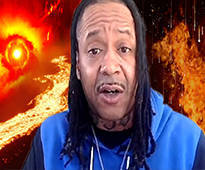
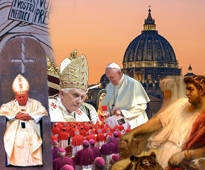
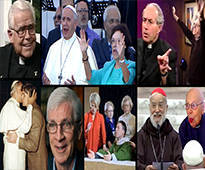
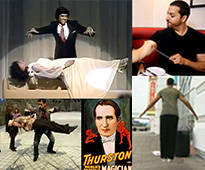
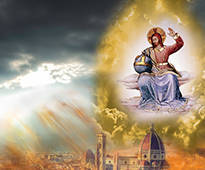

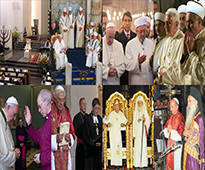


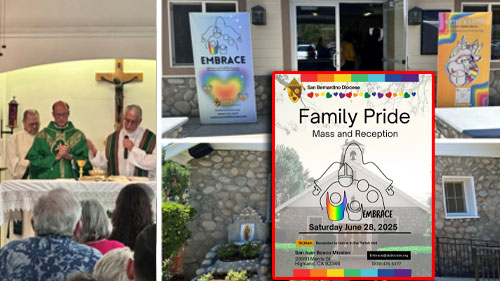 " />
" />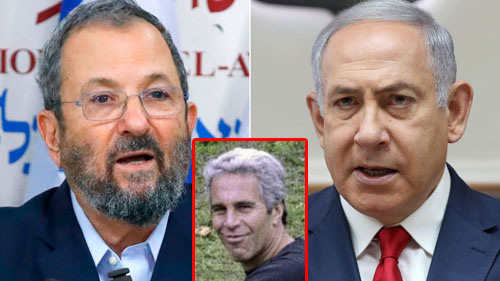 " />
" />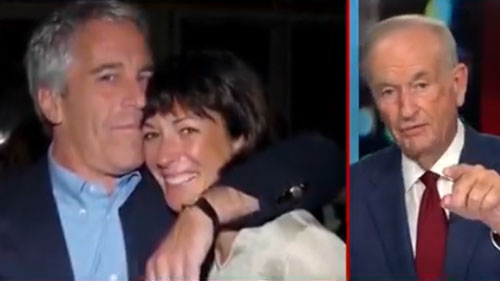 " />
" />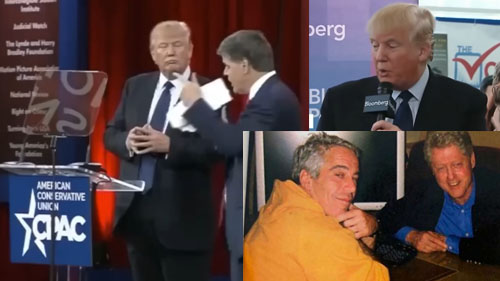 " />
" /> " />
" />




John Salza’s Arguments Against Sedevacantism Crushed
Bro. Peter Dimond
IN THIS ARTICLE:
-SALZA AVOIDS OUR DEBATE CHALLENGE-INVITATION
-SUMMING UP SALZA’S METHOD AND ARGUMENT
-IDENTIFYING SALZA’S PRIMARY ERROR...
-REFUTING SALZA’S PRIMARY ERROR…
-SALZA’S MASSIVE MISUSE AND DISTORTION OF CANONS 1557-1558 OF THE 1917 CODE OF CANON LAW
-SALZA SIMILARLY MISUSES AND MISAPPLIES CANON 1939
-SALZA ACTUALLY ARGUES THAT THE HERESIES OF THE VATICAN II ANTIPOPES ARE NOT PUBLIC
-SALZA VS. POPE PAUL IV ON THE COLLEGE OF CARDINALS
-SALZA’S OUTRAGEOUS DECEPTION AND ERROR ON CANON 2264
-SALZA’S MASSIVE CONTRADICTION
-SALZA VS. SALZA – HE DIRECTLY CONTRADICTS HIMSELF ON A CENTRAL ISSUE
-SALZA FALLS INTO A SECOND MASSIVE CONTRADICTION WHEN MAKING HIS FALSE (AND REFUTED) ARGUMENT CONCERNING CANON 2264
-SALZA REPEATS THE PIUS XII CONCLAVE LEGISLATION CANARD
-A LITTLE KNOWN PASSAGE IN BELLARMINE SHUTS DOWN SALZA AND OTHER NON-SEDEVACANTISTS
-SALZA BURIES HIS OWN THESIS BY DECLARING SEDEVACANTISTS TO BE “SCHISMATICS” AND “AUTOMATICALLY EXCOMMUNICATED”
-SOME CONCLUDING THOUGHTS
-WHAT WE’VE PROVEN
-SALZA IS STILL BOUND BY HUMAN RESPECT
A lawyer and former high-ranking Freemason named John Salza recently authored an attack on sedevacantism called, The Errors of Sedevacantism and Ecclesiastical Law. It was featured in the false traditionalist publication, The Remnant (July 15, 2010). The article was apparently persuasive for some people. A person from Hawaii wrote to us and attached the article as his reason for rejecting sedevacantism. Another person who had seen the article claimed that Salza had “decimated” the sedevacantist position. I will now turn my attention to this article. Salza, who apparently feels comfortable running with a wide range of false traditionalists, all the way from EWTN/New Mass supporters to those who sympathize with the SSPX, has put together an article that might have more distortion in a few pages than any other article I’ve ever read.
SALZA AVOIDS OUR DEBATE CHALLENGE-INVITATION
Before analyzing those distortions and refuting Salza’s corruption of Catholic teaching, it should be noted that on August 23, 2010, I challenged John Salza to a telephone debate-conversation on the topic of sedevacantism. Here’s the e-mail I sent.
This e-mail was followed up a few days later with a certified letter sent to his address. The certified letter was received and signed for at his address. Even though he definitely got our letter, as of this writing we have not received any response to the debate challenge. We believe Salza is avoiding us because he realizes that such an encounter would not go well for him. Perhaps he recognizes that he has no response for the numerous manifest heresies of Benedict XVI. Sure, he can conveniently ignore them in articles that focus on perverting Catholic principles and aspects of canon law. The false traditionalist audience reading his article will not notice or care that the real issues haven’t been addressed.
However, in a debate with us, he would have to address the real issues front and center with nowhere to run. Moreover, considering that his attack on sedevacantism comprises a system of involved distortions that is superficially impressive but in reality specious (as I will show), Salza might not even believe in what he has written. When we consider that he has the audacity to assert that sedevacantists should be called “empty heads,” his evasion of a debate with us speaks to his insecurity, his cowardice, and his inability to defend his position.
SUMMING UP SALZA’S METHOD AND ARGUMENT
Before I get into the precise details and the canon laws that Salza has misused in a fashion that’s quite dishonest, it’s important to quickly summarize and refute Salza’s main argument.
I recognize that the average attention-span is not very long, and for that reason I would like to highlight his primary error right away.
IDENTIFYING SALZA’S PRIMARY ERROR: HE ADMITS THAT CANON 188.4 TEACHES THAT A PUBLICLY HERETICAL CLERIC LOSES HIS OFFICE WITHOUT DECLARATION, YET HE CLAIMS THAT WE CAN ONLY KNOW THIS HAS OCCURRED IF THE CHURCH TELLS US
The following paragraph encapsulates Salza’s main contention and his primary distortion of Catholic truth. Please pay special attention to the bolded and underlined portion.
It’s important to notice that Salza admits, right off the bat, the key principle that sedevacantists employ; namely, that a public heretic is expelled from the Church and removed from office without declaration. By admitting this principle, but not granting their argument, Salza tries to disarm the sedevacantists of their main weapon and give the impression that the real issue lies elsewhere. He then draws what he considers to be his key distinction; it will also be the key distinction on which we must focus to see Salza’s primary error exposed.
He distinguishes between 1) the divine law automatically expelling the heretical cleric and removing him from office – a principle he grants, and 2) how Catholics can know or recognize that a cleric has become publicly heretical and lost his office. It is #2, Salza argues, that’s the hang up. According to him, the principle at work in #1 is essentially irrelevant to the argument because we can’t recognize to whom it applies without a declaration from the Church (#2). He then goes through an involved set of distortions of canon law in an attempt to bolster his argument that the Church does indeed teach #2, which, if it did, would effectively nullify any appeal to #1. I will go through those arguments and show that Salza has seriously misused and distorted each one; but first let’s refute Salza’s main claim: that #2 is in fact the teaching of the Church.
REFUTING SALZA’S PRIMARY ERROR: THAT A CATHOLIC CANNOT RECOGNIZE THAT A CLERIC HAS BECOME PUBLICLY HERETICAL WITHOUT A DECLARATION FROM THE CHURCH
Before examining the quotations that decimate Salza’s main contention, and thus his entire article in The Remnant, I would like readers to consider the logic behind Salza’s claim. He admits that canon law, doctors of the Church, popes, etc. do in fact teach that divine law automatically expels a heretical cleric from office without declaration. That begs the question: what’s the point of such a teaching if we are unable to recognize that a heretical cleric has lost his office until “the Church tells us”? If Salza were correct, the teaching would be pointless. The teaching that it occurs without declaration would effectively turn into: THERE MUST BE A DECLARATION. For, in such a scenario, Catholics would always have to submit to the individual as the legitimate office holder until the declaration is pronounced.
As we see – and this is a key point – Salza’s argument winds up completely transforming what he admits to be Church teaching (loss of office without declaration) into exactly the opposite: one must have a declaration. This is the crux of his error, and frankly the diabolical deception behind his article. For while honest people reading this will be able to spot the error clearly because I’m pinpointing it, reading his article and his involved quotations from canon law effectively obfuscate what’s being promoted, namely, a direct contradiction to the Catholic principle all claim to accept: heretics lose offices without declaration.
Now, let’s refute Salza’s #2, his claim that Catholics can’t know that a cleric has publicly defected from the faith until “the Church tells us.” Is this what the Church teaches? No, it is not. Pope Paul IV, in his Bull Cum ex Apostolatus Officio (which Salza also quotes in his article), teaches exactly the opposite.
Please notice, Pope Paul IV not only teaches that the heretical cleric loses his office without declaration (#1); but he also teaches (#2) that Catholics “shall be permitted at any time to withdraw with impunity from obedience and devotion to those thus promoted or elevated and to avoid them as warlocks, heathens, publicans, and heresiarchs” WITHOUT ANY DECLARATION. All of this applies to the time period before any declaration. Do you remember Salza’s key distinction? He argued that, yes, the Church does teach that heretical clerics are automatically expelled from the Church and their offices without declaration (#1); butwe cannot know that this has occurred “until the Church tells us” (#2). As we see, Pope Paul IV blows a big hole in (and in fact sinks) Salza’s #2 by clearly teaching that both (#1) the loss of office and (#2) the ability to recognize it and reject the heretic occur “without need for any further declaration.” With this point, Salza’s entire article, his key distinction, and his argument are destroyed.
It has been established that Pope Paul IV’s bull directly contradicts and refutes Salza’s position. The same is true of the 1917 Code of Canon Law, for canon 188.4 of the 1917 Code of Canon Law on loss of office without declaration gives a footnote (in the original Latin version) to Pope Paul IV’s bull. The two are in harmony.
Even though Pope Paul IV’s bull is more expansive on the ability Catholics have to recognize and reject the claimant before “the Church tells us” by a declaratory pronouncement, canon 188.4 necessarily teaches the same. That’s because it A) includes the same principle (loss of office without declaration); and B) it references Paul IV’s bull for its teaching on the matter, and it’s not reasonable to believe that canon 188.4 is directly contradicting Paul IV’s bull while simultaneously quoting it and repeating its core principle.
Is Salza or any other non-sedevacantist prepared to argue that Pope Paul IV does teach that a Catholic can recognize and reject the heretic prior to a declaration (as is indisputable from the above facts), but the 1917 Code of Canon Law teaches exactly the opposite (even though it references Paul IV’s bull)? By incorporating the principle of the divine law on loss of office without declaration and giving a reference to Paul IV’s bull, it’s clear the 1917 Code is reiterating the traditional principle (explicated in Cum ex Apostolatus Officio) that (#1) publicly heretical claimants lose their offices without declaration and (#2) such heretics can be recognized and rejected by Catholics.
Furthermore, a true understanding of principle #2 – which is the opposite of Salza’s false principle #2 – namely, that a Catholic can recognize without a declaration that a public heretic has lost his office, is consistent with St. Robert Bellarmine’s teaching on the matter. Considering that sedevacantists’ references to Bellarmine are common and well-known, it’s rather remarkable that Salza would so clearly contradict Bellarmine in falsely asserting the following:
This is an astounding error and corruption of Catholic truth. Salza’s position is quite clear, quite bold and quite wrong, as shown above. Notice how clearly he contradicts the teaching of St. Robert Bellarmine, who explains and repeats the traditional teaching of the Church on this matter.
Speaking of a claimant to the papal office, St. Robert teaches that the heretic must be rejected after showing himself to be obstinate, but BEFORE ANY DECLARATORY SENTENCE. Salza teaches exactly the opposite: that a declaration must be given before the heretic can be identified and rejected as outside the fold. Before I delve into the various canons of the 1917 Code and prove that Salza has distorted them, all of this prompts the question: is it likely that St. Robert Bellarmine and Pope Paul IV (who both definitely contradict Salza) also directly contradict the 1917 Code of Canon Law on the matter of a Catholic’s ability to recognize a heretic before a declaration (principle #2), while being in harmony with the Code on the related issue of loss of office without declaration (principle #1)? Or is it more likely that John Salza has misunderstood and misapplied the canons he thinks teach that a declaration is necessary for a Catholic to recognize and reject a public heretic? It’s obviously the latter.
SALZA’S MASSIVE MISUSE AND DISTORTION OF CANONS 1557-1558 OF THE 1917 CODE OF CANON LAW
Let’s now examine the canons in the 1917 Code that Salza thinks prove that a declaration is required for Catholics to recognize a heretic.
This is the type of argument that is superficially persuasive but in fact completely wrong. For that reason, it’s diabolically deceptive. Remember, we’ve already shown that Pope Paul IV, St. Robert Bellarmine and the 1917 Code (for the reasons explained above) teach that no declaration is required for a heretic to lose his office or for Catholics to recognize that he has lost it. Salza’s paragraph above is part of an involved set of deceptions that is properly labeled intellectual black magic.
It goes like this: “Here’s the Church’s teaching, that a man loses his office without declaration. Now, watch me dazzle you with a discussion of various canons and, in the haze that follows, I’ll have you convinced that the Church actually teaches just the opposite: a declaration is required.” It’s especially effective with those who might lack a deeper knowledge of the issues or don’t follow after truth. Let’s now expose it.
Salza makes reference to (and summarizes) canons 1557 and 1558 of the 1917 Code of Canon Law. He argues that they declare that only a pope could judge a cardinal. This argument was also made by a heretic on YouTube named Jeremiah Bannister, and I refuted it in this video: http://www.youtube.com/watch?v=8pe-CYctSlI. Salza says:
The problem with Salza’s argument is that these canons have no relevance to the issue. That’s because they pertain to trials, and the principle that a heretic loses his office without declaration takes effect without a trial. “Without declaration” means without a trial. If you consult the subject heading above canon 1556, you will discover that these canons all refer to “On Trials in General” (De Iudiciis in genere). Hence, they all pertain to how trials are conducted. Canons 1557-1558, which are cited by Salza, simply legislate that only a Roman Pontiff could preside over a trial of a cardinal or designate the judge at a trial. That has nothing to do with the principle that a publicly heretical cleric loses his office WITHOUT ANY DECLARATION OR TRIAL. Notice what all of the following quotes have in common. Here’s a hint: they all declare that no trial (or declaration) is needed.
Therefore, Salza’s citation of canons that deal with how trials are to be conducted (and how a pope alone has the right to preside over the trial of a cardinal) is completely beside the point, specious and deceptive. It demonstrates nothing except his own incompetence or malice.
Let’s move on to his next misapplication of canon law. It’s similar.
SALZA SIMILARLY MISUSES AND MISAPPLIES CANON 1939
Salza makes a similar mistake in analyzing canon 1939.
Again, if you consult the context of canon 1939, you will discover that it comes in Section 2 “On Particular Norms to be Observed in Certain Types of Trials” (De Peculiaribus Normis in certis quibusdam Iudiciis Servandis). That means that it’s another canon, found in the context of many similar canons, that deal with the procedures and processes to be followed in gathering information for (and conducting) trials. As shown above, this has nothing to do with the issue that a public heretic loses his office without any declaration or trial. In fact, the sub-section in which canon 1939 and following are found is “Title 19 – On the criminal trial” (De iudicio criminali).
Certainly the Code will lay down procedures for how trials are to be conducted, and how an investigation should occur in normal circumstances; but these procedures do not invalidate the principle (already taught in canon 188.4, by Paul IV and by Bellarmine) that a clearly publicly heretical cleric loses his office (and can be recognized) without any trial. This is especially true when we consider situations in which those who would be held responsible for investigating ecclesiastical crimes are themselves the ones who have publicly defected from the faith, rendering a normal investigation procedure impracticable. That’s precisely why the principle on loss of office without declaration has been explicated so clearly by the Church; it frees Catholics from the bondage of deceptive heretics like Salza and his fellow members of the Vatican II sect, who would have Catholics submit to, and profess a communion of faith with, a pack of non-Catholic apostates who embrace everything from pro-abortion politicians to African Animists.
Before I proceed to the next distortion from Salza, we should stop and consider what we’ve already seen and exposed. He has directly contradicted Catholic teaching on the ability Catholics have to recognize heretics (see Pope Paul IV and Bellarmine), and clearly misapplied and distorted numerous canons that don’t apply to the question at hand but rather to procedures for trials. As his article proceeds, he only builds upon his corrupt foundation, adding more similarly distorted canons, while referring back to the ones he has already distorted. He thus adds layer upon layer to his imposture. That’s why his method and article can be called intellectual black magic, and it’s only exposed by the careful analysis we are doing right now.
SALZA ACTUALLY ARGUES THAT THE HERESIES OF THE VATICAN II ANTIPOPES ARE NOT PUBLIC
In the midst of his irrelevant discussion of canon 1939 (for this canon and those which follow it apply to trials), Salza argues that the heresies of the Vatican II antipopes are not “public” or “notorious” or “certain.” He says:
Before we refute Salza’s false notion of what constitutes public heresy, this is a prime example of how Salza piles more dirt on an already filthy floor. We are now considering some of the paragraphs that come near the end of his article, and he’s still implementing his completely false understanding of canons 1557-1558. Remember, near the beginning of this article we examined those canons. They say that only a pope has the right to judge a cardinal. They have nothing to do with this issue because they apply to trials. Jumping off his corrupt platform, Salza applies his misunderstood canons (1557-1558) and reasons that since only a pope can judge a cardinal, Roncalli’s (John XXIII’s) heresies couldn’t have been public because Pius XII didn’t render any judgment in this area! Behold the intellectual black magic at work. It’s similar to evolution, which starts with a fraudulent fossil and constructs an entire body out of it. Inescapably, the end result is a monster. That’s what we have in Salza’s conclusions: the monstrous teaching that men who blatantly deny the most basic aspects of the Gospel in front of the world can’t be considered public heretics. So, to address his point, do the Vatican II “popes” fail to meet the definition for “public” in canon 2197, as Salza claims? Let’s examine.
Is it commonly known that John Paul II and Benedict XVI agreed with the Lutherans on Justification? Yes it is. Is it commonly known that they have promoted false ecumenism, salvation outside the Church, joint professions of faith with heretics, participation in non-Christian worship (synagogues, mosques, etc.)? Of course it is. It’s all over the news. The claim that the crimes are not public assaults the basic common sense of an informed Catholic. But what about Salza’s claim that the crimes can’t be public because they were not “commonly known” considering that almost the entire Catholic population accepted Roncalli and his “successors” as popes? The answer is that it’s irrelevant. Bouscaren and Ellis explain it well in their commentary on this canon.
As we see, a crime can be public even if only a few Catholics know about it. But the crimes we’re discussing are public and notorious by their very nature. In fact, many of them come from the official public teaching of Vatican II, their celebrated false council. Suffice it to say, if the crimes are divulged to large numbers, they are public. Salza’s argument is ridiculous and attacks Catholic and common sense. The next time Benedict XVI sends out a public letter praising the Eastern Schismatics, Salza should write an article to reassure his fellow heretics that, despite its international circulation, the letter was actually an occult (secret) message no one is supposed to know about. Or perhaps, as a lawyer, he should write a letter warning L’Osservatore Romano (the official Vatican newspaper) that they should stop making “public” all of Benedict XVI’s “private” speeches – for example, his May 4, 2010, open letter to the Chief Rabbi of Rome, on the occasion of the rabbi’s 95th birthday, in which Benedict XVI declared that the Christ-rejecting rabbi and leader of a Jewish sect has “salvation” and is a sign of “rebirth.” http://www.zenit.org/article-29142?l=english
SALZA VS. POPE PAUL IV ON THE COLLEGE OF CARDINALS
Yet, there’s something else that serves to uncover Salza’s spiritual fraud in this matter. Salza says the crimes can’t be public because “the circumstances were not such as to lead to the conclusion that the alleged heresies would easily become commonly known (evidenced by the fact that, over the last 50 years, the College of Cardinals, the four successor Popes and almost the entire Catholic world held Roncalli as a true Pope).”
He argues that since the College of Cardinals, etc. accepted them as popes, the crimes couldn’t be public. Once again, we have caught Salza arguing directly against the teaching of Pope Paul IV. Remember this:
Directly contradicting Salza, Pope Paul IV declares that even if all the cardinals (and in fact the entire Church) give this man obedience, his election and acceptance of the office would not be valid. The laity shall be permitted to reject him. Was Pope Paul IV contemplating a sin of heresy that could qualify as PUBLIC? Obviously he was. Thus, it’s certain that a heresy can be public even though the cardinals and almost the entire Church fail to recognize it. Salza is dead wrong and directly refuted by Pope Paul IV’s bull.
SALZA’S OUTRAGEOUS DECEPTION AND ERROR ON CANON 2264
Of all the canons Salza misuses and misapplies, his treatment of canon 2264 (and those in that area) could be the most pernicious and the most revealing. Here’s what he says:
There are some extremely important matters to consider in Salza’s argument and reliance on canon 2264, so please bear with me as I explain his mistake. It will serve to illustrate that he definitely does not understand or properly apply canon law. It will also be proven that Salza, in making the argument above, falls into two MASSIVE contradictions, including one that undercuts his primary claim: that the Church must tell us that someone has been self-excommunicated for heresy.
SALZA’S MASSIVE CONTRADICTION
Now, let’s consider these important points. Salza relies heavily on canon 2264 to argue that automatically excommunicated heretics do not lose their jurisdiction. This is the same argument I refuted in this video in October of 2009: http://www.youtube.com/watch?v=Y_s0mZPhyGk. Regular readers of our website will remember this video because it dealt with the false traditionalist heretic with the pipe.
Salza argues that, according to canon 2264, even if the Vatican II antipopes were self-excommunicated for heresy, they would still retain jurisdiction “over the universal Church.” Note: by saying that they would retain jurisdiction “over the universal Church,” Salza is arguing that they would retain their offices. But at the beginning of his article, he already admitted that self-excommunicated heretics lose their offices without declaration. Remember this:
We have thus caught Salza is a major contradiction, a lie – his heresy, in fact. And it comes on an issue that is absolutely central to this debate.
SALZA VS. SALZA – HE DIRECTLY CONTRADICTS HIMSELF ON A CENTRAL ISSUE
At the beginning of his article, he admitted that self-excommunicated heretics lose their offices without declaration. Now, in analyzing and attempting to use canon 2264, he argues the opposite: that they retain their jurisdiction over the universal Church (which means their office, since ordinary jurisdiction is attached to an office). Which one is it, John? Does the office of a self-excommunicated heretic “fall vacant without any declaration,” or does the heretic retain his “jurisdiction as pope” over the universal Church?
Salza blatantly contradicts himself on a central issue simply because his position is false, his understanding of canon law is flawed, and his argumentation is dishonest and inconsistent. Now that we’ve uncovered the massive contradiction in Salza’s latest failed attempt to expound canon law, let’s refute his newest argument (the one found in the second half of his article – but contradicted in the first half) concerning canon 2264. He says that canon 2264 proves that self-excommunicated heretics retain jurisdiction over the universal Church. This is another example of his perversion of canon law.
Canon 2264 of the 1917 Code of Canon Law does not teach what Salza says primarily because it does not deal with loss of office. Consult the section headings. Canon 188.4,not canon 2264, deals with loss of office. Salza admits this at the beginning of his article when he agrees that canon 188.4 teaches that heretics lose their offices without declaration. Hence, Salza’s own article supplies all the proof we need to disprove his argument (found later in the article) that canon 2264 teaches that heretics retain their offices. But what is canon 2264 talking about, then?
Canon 2264 concerns the fact that excommunicated persons can perform certain acts of jurisdiction validly – not that they retain offices in the church. It should also be noted that the excommunicated persons envisaged by this canon are not necessarily all heretics, for excommunication can be both major and minor. That further highlights Salza’s distortion. The canon concerns various excommunicated persons and their performance of certain acts of jurisdiction validly. This is also discussed in our audios on jurisdiction. The canon also does not mention anything about a cardinal or a pope, contrary to what Salza says.
People must understand that confessions require jurisdiction. Suppose a bishop is automatically excommunicated for heresy, but a Catholic who approaches the bishop is unaware of this fact. In that case, the Church can supply the jurisdiction to the heretical bishop (who has lost his office without declaration – canon 188.4 ) to PERFORM THAT ACT OF JURISDICTION (the absolution of the Catholic) validly. However, the bishop does not retain the office he once held. He does not have ordinary jurisdiction, but rather he is given jurisdiction only for the act of absolving the penitent. Failing to recognize this distinction (or dishonestly ignoring it) is Salza’s primary mistake in understanding canon 2264.
The fact that canon 2264 concerns excommunicated persons performing certain acts of jurisdiction validly – not retaining offices – is proven by the canon’s words, its context and its reference to canons 2261.2 and canon 2261.3.
Notice that canon 2264 refers to canons 2261.2 and 2261.3. Canons 2261.2 and 2261.3 deal with how the faithful may approach certain excommunicated persons for sacraments; this proves our point that the context deals with an excommunicated person performing a certain act of jurisdiction validly, not the idea that excommunicated heretics retain offices in the Church while outside of it (which was already contradicted by canon 188.4). Here are canons 2261.1-3 to illustrate the full scope of Salza’s distortion:
It’s clear that the subject matter is how excommunicated persons may administer certain sacraments and confer certain acts of jurisdiction with validity, not that excommunicated heretics retain their offices. In completely misapplying it, Salza has mutilated the proper understanding of the canon and wound up directly contradicting the earlier part of his article. Moreover, Salza’s contention that excommunicated heretics would retain their jurisdiction as pope (their office) not only directly contradicts the first part of his article and these points I’m making about the canon, but the authoritative teaching of the Magisterium.
As we see, it’s a teaching of faith that heretics do not retain their offices (i.e., ordinary jurisdiction). They cannot command in the Church. No principle of canon law could overturn this truth. To think otherwise would be “absurd,” according to Pope Leo XIII. That means that even if Salza’s understanding of canon 2264 were correct (which it most assuredly is not), it still wouldn’t prove that heretics retain jurisdiction as pope, for that’s contrary to unchangeable Catholic teaching.
But if the exposure we’ve given to Salza’s massive contradiction and numerous perversions of canon law weren’t enough, there’s more.
SALZA FALLS INTO A SECOND MASSIVE CONTRADICTION WHEN MAKING HIS FALSE (AND REFUTED) ARGUMENT CONCERNING CANON 2264
Do you remember how Salza drew a critical distinction between (# 1) heretics losing their offices without declaration, and (#2) the ability Catholics have to recognize it? We spent some time carefully refuting his points on that matter, but we must expose another massive contradiction that’s relevant to it. Salza was adamant that Catholics cannot know that someone has been self-excommunicated until “the Church tells us.”
But in explaining his false (and already refuted) understanding of canon 2264, Salza contradicts what he says above. That’s because he applies canon 2264 to self-excommunicated heretics. Allow me to explain.
Here’s the problem for Salza, and please follow this carefully. Canon 2264 makes reference to canon 2261 which itself indicates that Catholics can recognize a person as being excommunicated while not being a declared excommunicate!
Notice that the first part of the canon presupposes that the faithful can know that someone has been excommunicated (even though that person hasn’t been declared). That’s proven by the fact that it lays down a permission for the faithful to seek sacraments from such an excommunicate, but not from a declared excommunicate except in danger of death! It’s therefore possible for a Catholic to recognize that a person is excommunicated but not a declared excommunicate. Since Salza includes “self-excommunicated” heretics within the category of individuals under discussion in this canon (and the related canon 2264), that means that he unwittingly admits that Catholics can recognize on their own that some people are self-excommunicated heretics but have not yet been declared excommunicated! That proves that his own reasoning and argumentation (not to mention Paul IV, etc. which we covered) refutes and contradicts his central claim in the article! Do we need to put any more nails into the coffin of Salza’s argument?
SALZA REPEATS THE PIUS XII CONCLAVE LEGISLATION CANARD
Salza, “The Errors of Sedevacantism and Ecclesiastical Law,” The Remnant: “Ecclesiastical law poses further problems for the Sedevacantist thesis. Popes St. Pius X and Pius XII legislated that a Cardinal’s election to the papacy is presumed to be valid, irrespective of any ecclesiastical censures he may have incurred prior to his election.
We have refuted this false argument numerous times. We refuted it in our book, The Truth about What Really Happened to the Catholic Church after Vatican II, as well as in this video: http://www.youtube.com/watch?v=8pe-CYctSlI
The refutation is as follows: One needs to understand that excommunication can be incurred for many things. Historically, excommunications were distinguished by the terms major and minor. Major excommunications were incurred for heresy and schism (sins against the faith) and certain other major sins. Those who received major excommunication for heresy were not members of the Church. Minor excommunication, however, did not remove one from the Church, but forbade one to participate in the Church's sacramental life. Pope Benedict XIV made note of the distinction.
Minor excommunication, on the other hand, was incurred for things such as violating a secret of the Holy Office, falsifying relics (c. 2326), violating a cloister (c. 2342), etc. These are all ecclesiastical or Church penalties. Such actions, though gravely sinful, did not separate a person from the Church. And though the terms major and minor excommunication are no longer used, it remains a fact that a person could incur an excommunication (for something other than heresy) which would not separate him from the Church, and he could incur an excommunication for heresy which would separate him from the Church.
Therefore, a cardinal who receives an excommunication for heresy is no longer a cardinal because heretics are outside the Catholic Church (de fide, Pope Eugene IV). But a cardinal who receives an excommunication for something else is still a cardinal, though in a state of grave sin. So when Pope Pius XII says that all cardinals, whatever ecclesiastical impediment they are under, can vote and be elected in a Papal conclave, this presupposes cardinals who have received an excommunication for something other than heresy, since a cardinal who has received an excommunication for heresy is not a cardinal at all. The key point to understand is that heresy is not merely an ecclesiastical impediment, but an impediment by divine law.
The canonist Maroto explains: “Heretics and schismatics are barred from the Supreme Pontificate by the divine law itself, because, although by divine law they are not considered incapable of participating in certain types of ecclesiastical jurisdiction, nevertheless, they must certainly be regarded as excluded from occupying the throne of the Apostolic See…” (Institutiones Iuris Canonici, 1921.)
Notice, heretics are not excluded from the Papacy by merely ecclesiastical impediments, but impediments flowing from the divine law. Pius XII’s legislation doesn’t apply to heresy because he was speaking about ecclesiastical impediments that a cardinal within the Church could labor under: “…or any other ecclesiastical impediment…”. Thus, his legislation does not show that heretics can be elected and remain popes, which is why he didn’t mention heretics. Pope Pius XII was referring to Catholic cardinals who may have been under excommunication.
To further prove the point in a different way, let’s assume for the sake of argument that Pope Pius XII’s legislation did mean that a heretical cardinal could be elected pope. It still wouldn’t make a difference. Notice what Pius XII says:
This is an extremely important point. Pius XII says that the excommunication is suspended only for the time of the election; at other times it remains in vigor. This would mean that the excommunication for heresy would fall back into force immediately after the election and then the heretic who had been elected pope would lose his office! Thus, no matter what way you look at it, a heretic could not be validly elected and remain pope.
If a heretic (one who denies the faith) could be the head inside the Church, then the dogma that the Church is one in faith (as in one, holy, Catholic and apostolic) would be false.
With the examination above, we have carefully refuted all of John Salza’s main arguments. However, there are a few more important points to make, in addition to concluding comments.
A LITTLE KNOWN PASSAGE IN BELLARMINE SHUTS DOWN SALZA AND OTHER NON-SEDEVACANTISTS
As we’ve shown, the idea that Catholics do not have the ability or the authority to recognize that a cleric has publicly defected from the faith (and thus lost his office) is the key argument upon which anti-sedevacantists such as Salza state their case. We have refuted that in detail, but here’s a little known passage that provides a knockout punch to the idea.
In this passage, St. Robert Bellarmine is discussing Pope Liberius and the Arian heresy in the 4th Century. It was widely believed at that time that Liberius fell into a compromise with the Arian heretics and had St. Athanasius excommunicated. This turned out to be false, as Pope Pius IX points out.
Even though it turned out that Pope Liberius was not a heretic, St. Robert Bellarmine says that because Liberius appeared to be a heretic, the Catholics LAWFULLY CONSIDERED HIM A HERETIC, AS ONE WHO WAS NOT THE POPE, AND AS ONE WHO WAS OUTSIDE THE CHURCH. THEY THEN JUSTIFIABLY WENT OVER TO FELIX, WHO BEGAN TO “REIGN”! In other words, even though Pope Liberius was not a heretic (and actually was still the true pope), he appeared to be a heretic. Therefore, he was necessarily considered to have lost his office BECAUSE CATHOLICS CANNOT PROFESS COMMUNION WITH PEOPLE WHO PROFESS HERESY IN THE EXTERNAL FORUM! St. Robert Bellarmine describes this as the proper Catholic reaction to the situation. He thus destroys the argument of people such as John Salza and countless other non-sedevacantists. And if St. Robert’s words show that Catholics were justified in presuming Pope Liberius a heretic and outside the Church, who only appeared to be a heretic (but actually wasn’t), how much more in the case of Antipope Benedict XVI, who is without any doubt a heretic and an apostate. In fact, as I’m writing this, Benedict XVI is in England preparing for a joint “blessing” and prayer ceremony with the notoriously heretical and schismatic Protestant “Archbishop” of Canterbury in a Protestant church.
SALZA BURIES HIS OWN THESIS BY DECLARING SEDEVACANTISTS TO BE “SCHISMATICS” AND “AUTOMATICALLY EXCOMMUNICATED”
Salza falls into another embarrassing contradiction – one that rips the heart out of his thesis – when he declares:
By what authority does Salza declare that sedevacantists have been “automatically excommunicated”? Didn’t his article argue that “the Church must tell us” if someone has fallen under automatic excommunication for sins that involve a defection from the faith? Yes it did.
As we see, Salza destroys his entire argument and proves that he’s a corrupter of Catholic truth and an astounding hypocrite. By declaring (quite wrongly) that sedevacantists are schismatics and automatically excommunicated from the Church, he is doing what he elsewhere claims can’t be done. Sedevacantists have not been declared excommunicated by authorities of the Vatican II sect.
Nevertheless, Salza, without any declaration from his sect’s authorities, declares that sedevacantists are excommunicated. By doing so he admits that Catholics have the ability to recognize that people have defected from the faith and been excommunicated before the Church officially tells us! He applies (albeit wrongly) the Catholic principle that those who clearly deny the Catholic faith or separate from the Chair of Peter must be considered heretical and/or schismatic and excommunicated, the very principle his article argues can’t be employed until “the Church tells us”! What astounding contradictions.
That brings us full circle to the principle at the heart of this issue. At the heart of this issue is the perennial Catholic teaching that those who defect from the faith or from the true communion of the Chair of Peter must be considered outside the Church, even if the Church hasn’t declared it concerning each one. Pay special attention to the second and third quotes below, concerning the “Old Catholics”; for they prove that all those who fall into the category of the “Old Catholics” are to be considered outside the Church, even if the Church hasn’t told us in each case. This principle would of course apply to Benedict XVI, who prays with and makes joint professions of faith with the world’s leading schismatics. The discussions of St. Robert Bellarmine (not to mention the bull of Pope Paul IV) also prove that this principle applies to one who purports to be the pope.
This demonstrates again that we must consider as schismatics and heretics individuals who reject Catholic dogma (such as Antipope Benedict XVI and his bishops), even though those individuals claim to be Catholic and have not been specifically excommunicated by name.
If Salza had accepted our debate challenge, he would have encountered numerous insuperable problems on this front. In light of the above principle – not to mention his glaring contradiction on the matter – he would have been asked to address if he regards anti-Catholic Protestant ministers, leaders of the “Orthodox” sects, etc. as “automatically excommunicated” and outside the Church? According to his article, he would have to say no. But according to his statement about sedevacantists, he would have to say yes. By saying no, they are not outside the Church by automatic excommunication, he would deny the faith and make a mockery of the Church. By saying yes, he would contradict his own article, prove our point about the application of the aforementioned Catholic principle on defection from the faith, and contradict his own Antipope Benedict XVI concerning those groups.
SOME CONCLUDING THOUGHTS
We have thus come to the conclusion of this detailed refutation of John Salza’s article, The Errors of Sedevacantism and Ecclesiastical Law. The reader who has followed all the way through can perhaps see that I wasn’t exaggerating at the beginning when I said that his article might contain more distortion in just a few pages than any other article I’ve read. The amount of distortion in the article – an article that no doubt persuaded many who lack the good will or the knowledge to see through its subterfuge – explains why it was featured in a false traditionalist publication such as The Remnant. The same group which labeled the notorious Protestant Tim Tebow “a Christian” would accept (and worship) Lucifer as the pope, as long as he said a few things about the Latin Mass.
We can also see what would have happened if John Salza had possessed the courage to accept our debate challenge, which he did not. He is a true hypocrite and a coward. That’s because he claims to be an apologist with the desire to defend and spread the truth, yet he backed down from the opportunity to defend what he thinks is the truth in a debate with us. We have the most active sedevacantist website in the world by far, and he also considers sedevacantists schismatics. Hence, debating us would have been a prime opportunity for him to “evangelize.” But he didn’t accept it because he didn’t want to be embarrassed.
Moreover, it should be noted that while I’ve carefully refuted each of Salza’s main arguments, his article does not even attempt to address any of the heresies from Benedict XVI, etc. He simply ignores all of the examples of heresy that sedevacantists such as ourselves bring up to prove that Benedict XVI is not a Catholic. As demonstrated by all the debates we’ve had, the best they can do in that regard is to completely ignore them. That’s because there is no response whatsoever to the countless heresies of Benedict XVI, John Paul II, Paul VI, etc., which prove to anyone not of evil heart that they are/were completely devoid of Catholic faith.
WHAT WE’VE PROVEN
Before I close, it’s important to very briefly take stock of what we’ve seen in this article.
- I took the time to identify and explain Salza’s key distinction. Do you recall the distinction between #1 and #2? That was between #1, the truth that heretics lose their offices without declaration, and #2, the ability Catholics have to recognize it. Salza claimed that #2 required a declaration from the Church. I showed that Pope Paul IV, St. Robert Bellarmine and (by extension) the 1917 Code all disprove Salza on that point, while everyone (including Salza) agrees that #1 is a principle of the divine law.
- I also discussed why #1 would be pointless if Salza were correct about #2.
- I then showed that Salza contradicts himself on #1 when he says that canon 2264 indicates that heretics retain their offices/jurisdiction over the Church.
- I also proved that Salza contradicts himself on #2, for by applying canon 2264 to self-excommunicated heretics, he admits they can be recognized without a declaration as excommunicates (for that is indicated in canon 2264 in conjunction with canon 2261).
- I then showed that Salza again contradicts himself on #2, when he arbitrarily (and without any declaration from the Church) declares that sedevacantists are “schismatics” and “automatically excommunicated.”
Thus, we have carefully uncovered a wicked scheme to obfuscate the truth, confuse Catholics, and lead souls to Hell. Laboring in a diabolical fog, Salza probably can’t even recognize the full extent of the deception he was moved to create in his article.
When I came to the end of carefully analyzing his arguments, I was taken aback by what I discovered. It became very clear to me, with a different kind of emphasis, that heretics such as Salza are truly insidious. It struck me that his treatment of canon law was akin to a diabolical magic act. Start with a principle (heretics lose offices without declaration); spend some time shifting the focus to a detailed and involved discussion of various canons from the Code of Canon Law, which will intimidate the readers; and, at the end, the principle that you admitted at the beginning (no declaration required) will disappear from their minds. They will come to believe that a declaration is required. It became clear that through his process of specious argumentation and misapplication of canon law, he was actually turning on its head the very principle he had already admitted. It was done by confusion, deception and overwhelming most readers with an apparent high-level discussion of ecclesiastical law. Being able to clearly see and expose this kind of deception is analogous to pulling the mask off a being that appeared to be friendly and urbane only to discover a hideous monster.
This is a spiritual battle, and Catholics must recognize that dark forces are at work in men with the goal of perverting the truth, leading people astray, and keeping them captive to heretics. Those who would go to great lengths to pervert Catholic teaching in the way that I’ve exposed in this article can only be called evil. In this case, it was done by tortured and involved misapplications of canon law that only served to confuse, intimidate and overwhelm the average reader. The effect was that Catholics would feel compelled to remain subject to men who, by any honest assessment, are clearly antichrist purveyors of heresy.
SALZA IS STILL BOUND BY PEER PRESSURE AND HUMAN RESPECT
I recently viewed part of a video interview that Salza gave on EWTN’s program The Abundant Life. Salza was explaining his process of initiation into Freemasonry, which he has since left and condemned. Salza explained the discomfort he felt when the Freemasons asked him to undress and to remove his scapular and other Catholic sacramentals. Salza talked about how his conscience bothered him at the time, but that he pushed ahead anyway, rising higher and higher in Freemasonry, mainly because of the peer pressure of his friends and acquaintances. I submit that John Salza is still subject to, and a victim of, the same diabolical peer pressure.
I’ve read some of his articles, including one on the New Mass. In that article, he provided some of the main evidence (certainly enough) to show that the New Mass cannot be considered valid. Any honest and careful reader would have come to the conclusion that he believed the New Mass should be considered at least dubious. However, with one subtle distortion/leap of logic that I don’t have time to address here, he wound up (wrongly) concluding that, despite all of what he showed, the New Mass should be considered valid. His dishonest conclusion that it must be considered valid makes him much more palatable to the false traditionalist heretics with whom he now runs; but it doesn’t please God. He is surrounded by a somewhat insulated clique of false traditionalist heretics who would ridicule and ostracize him if he denounced Benedict XVI as a heretic or condemned the New Mass completely. A man who has true fortitude and liberty in Christ is not shackled or inhibited by what those around him will say, and that’s precisely the problem we have today in the traditionalist movement. We don’t have many people who are serving God alone, without regard for the opinions of men who might condemn or separate from them on account of it. They hide, distort or deny the truth to avoid displeasing others or causing a shake-up in their lives; and they wind up serving Satan.
It was apparent to me in reading his article against sedevacantism – specifically because he seemed to just throw together, in as few pages as possible, everything he believed might appear to refute sedevacantism – that he is more concerned with being applauded as having supposedly refuted sedevacantism than with consistent argumentation or the truth. Throwing the kitchen sink at the sedevacantists, in an article that is superficially impressive but doesn’t hold up under careful scrutiny, will win him praise, acceptance and possible elevation in the crowd of false traditionalists. However, it won’t serve God or the truth.
As my article showed, there are only two explanations for the massive contradictions I uncovered in his article: 1) either he can’t see it because he’s so deeply lost in a diabolical fog; or 2) he doesn’t really care because his primary concern is to compile whatever he can that appears to contradict sedevacantism and, in the process, please the false traditionalist crowd. The same person who wasn’t serving God when he rose through the ranks of Freemasonry, despite his serious internal misgivings, is still not serving God.
More: John Salza: Former Freemason and Heretical Defender of the Vatican II Sect
(Note: the bolding and emphasis in this article, such as italics and underlining, were my own and not necessarily that of the source quoted).
Sign up for our free e-mail list to see future vaticancatholic.com videos and articles.
Recent Content
^